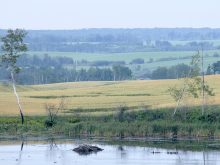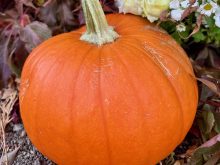A senior Statistics Canada official cautioned senators last week to be careful about making sweeping assumptions about the sorry state of the farm economy and the extent of farm poverty.
The latest census of agriculture shows that Canada’s farm economy has trouble spots and money-losing farmers but also bright spots and profitable farms, Statistics Canada agriculture division director Denis Chartrand told senators who have been studying rural poverty.
“You have to look at both the size and kind of farm,” he said. “You will find that there are people in difficulty but there are also people who are making money. There is a mixture and you want to identify which ones they are so you can be more effective in helping them out.”
Read Also

Rural Manitoba resources slim on natural disaster planning
A study from Brandon University’s Rural Development Institute has found that many rural and small municipalities don’t have the staff or resources to make formal climate plans against natural disaster.
Conservative Saskatchewan senator Len Gustafson asked what the 2006 census of agriculture results released in mid-May said about poverty.
“What is your take on rural farm poverty?” he asked. “In the mind of the department, is there none? Agriculture in Canada is in big trouble. We need to start from somewhere with governments admitting that it is in trouble and then working on it from that point.”
Chartrand said the analysis has to be more precise in deciding which farmers are in trouble.
“Obviously, more smaller farms are in difficulty but you have to be careful not to include the lifestyle farmer who enjoys the operation but is not looking to make money from it,” he said. “Some small farms are trying to survive and they are the ones you want to identify.”
But the Statistics Canada officials also conceded to frustrated senators that they do not differentiate between commercial and lifestyle farmers when they report that Canada has more than 200,000 farmers and a large portion of them earn less than $25,000 in gross farm revenues.
Prince Edward Island Liberal senator Catherine Callbeck noted the census farm numbers include $2 million potato operations and a Quebec maple syrup operation that sells $500 worth of product.
“Has any consideration been given to putting revenue restriction on who was a census farm and who is not?” she asked.
Census of Agriculture director Cathy Cromey said the agency counts as a farmer anyone who grows anything for sale and calls themselves a farmer. It does that because it is easier, she added.














